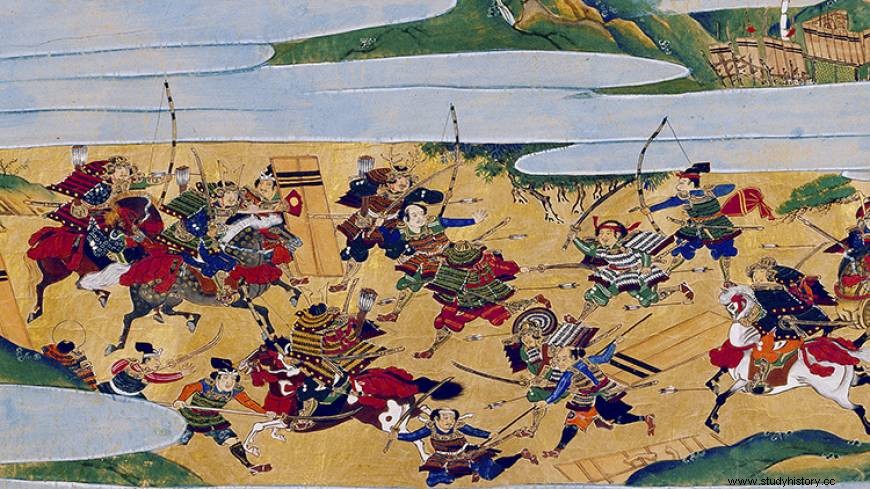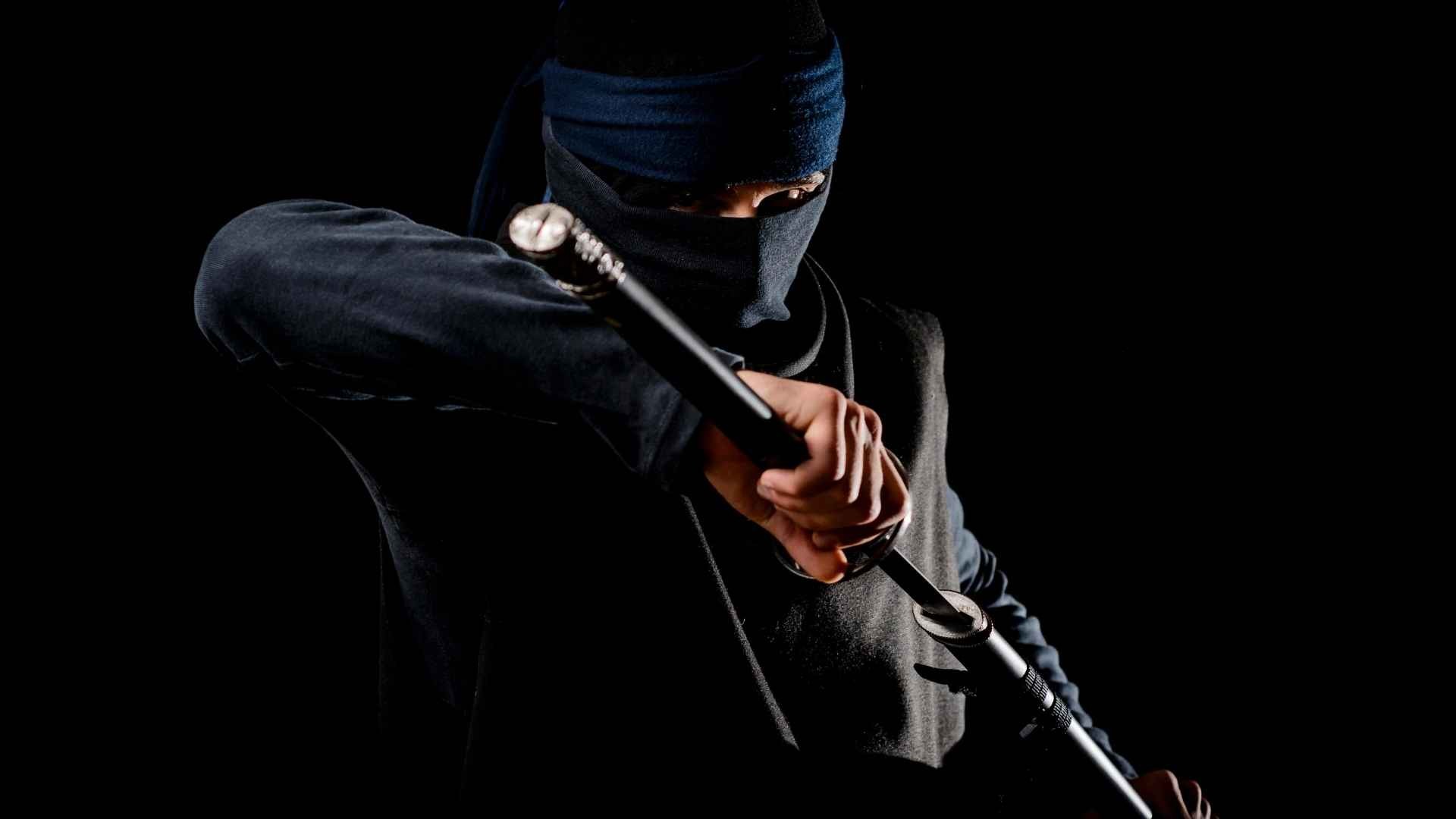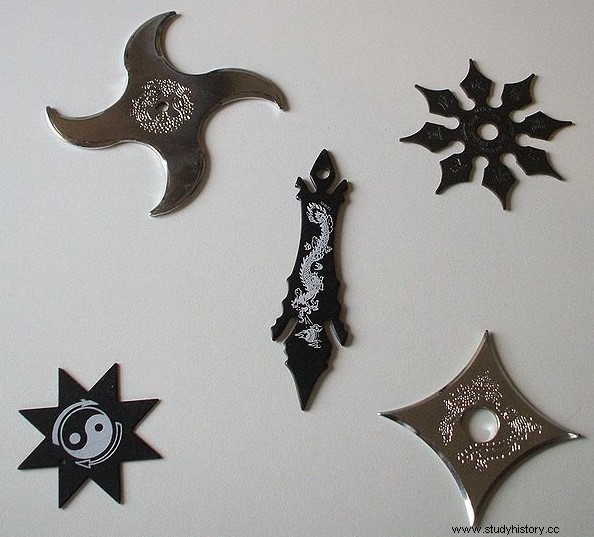Cultural Origin:The Sengoku Period

Few ancient warriors today are as famous as ninjas. Today, ninjas are myths. They are known for their almost mysterious stealth powers, fighting skills and being a master assassin.
Ninjas originated in Japan Under 15 th century, in a time of chaos. Ninjas, or shinobi, were most prominent during the Sengoku period, also known as the Warring States Period, which lasted from 1467 to 1615. It was a time when medieval Japan was in a constant state of civil war.How did the conflict begin?
The conflict began over the question of who should be the next Shōgun in Japan after Ashikaga Yoshimasa, who was Japan's military dictator from 1449 to 1473. Originally, in 1464, Yoshimasa appointed his younger brother Ashikaga Yoshimi to succeed him. However, this succession plan was disrupted when Yoshimasa had a son in 1473 named Yoshihisa. This put the scheme plans in disarray. A prominent family led by Yamana Sōzen, a Shōgun deputy, supported the brother. Another family led by Hosokawa Katsumoto, another deputy and son-in-law of Sōzen, claimed that the son was the rightful heir. This dispute led to a full-scale war called the Onin War, which began in 1467 and ended in 1477. There was no clear victor.
The unimaginable end of the Onin war sparked a chain reaction. As a result, almost every Daiyamo (warlord) and samurai family engaged in a struggle for control of Japan. During this Sengoku period, war spread throughout the country. Warlord families rented and distributed thousands of samurai for battles over each other's land. Samurai were elite warriors who held high standards of honor and loyalty to their warlords. Samurai often fought on the battlefield and were heavily armored.
In this civil war, alliances were often forged and broken. The Shōgun government fell apart, leaving Japan with no centralized government. This chaotic period ended when the warlords Tokugawa Ieyasu, Toyotomi Hideyoshi and Oda Nobunga entered into an alliance and defeated the other warlords and finally united Japan.
The tumultuous era of the Sengoku period, with its divisions, double-crossing and political chaos, created the perfect environment for ninjas and their skills, especially espionage and assassination.
Ninja Clans

Ninjas were created by samurai families to support their warlords in the fight against other warlords by sabotage and assassination. Ninjas were men of samurai status or those born into a samurai family. Ninja clans were established in training camps and villages across the country, including Iga-Ryū and Kōga-ryū. Since these training schools were meant to be hidden, founding dates and leaders are a mystery.
Iga-Ryū
Iga-Ryū or "Iga School" was one of the most famous ninja clans. It was named after the province of Iga. The date of its founding is unknown, but the first recorded appearance of Iga-Ryū was in 1487. Iga-Ryū helped the warlord Rokkaku Takayori of Ōmiprovince against an invasion by Shōgun Ashikaga Yoshihisa. The Iga ninjas were trained in the martial arts ninjutsu and jujutsu and were taught how to fight both from the shadows and on the battlefield. Iga-Ryū suffered a major loss in 1581 when Oda Nobukatsu, son of warlord Oda Nobunaga, launched a full-scale invasion of Iga. He slaughtered thousands of samurai and ninjas, with only a few survivors escaping.
The Iga-Ryū School is known for such notable ninjas as Hattori Hanzō. Hanzō gets the credit for saving Shōgun Tokugawa Ieyasu's life and helping in his attempt to unite Japan. Hanzo's loyalty inspired Tokugawa Ieyasu to hire around two hundred surviving Iga-Ryū ninjas to guard the gates of Edo Castle, Tokugawa's main operational base.
Kōga-ryū
Another famous ninja clan was the Kōga-ryū, meaning "Kōka School". Kōga-ryū identified ninja schools in Kōka in Ōmi province. Iga-Ryū and Kōga-ryū rarely come into direct conflict with each other. Iga-Ryū and Kōga-ryū had many similarities in training and skills. Ninjas from Kōga-ryū were trained in the discipline of ninjutsu. They were also known for their mastery of hand-to-hand combat, also known as taijutsu. One of the most famous Kōga-ryū ninjas was Fujita Seiko. Fujita was the fourteenth and last heir to the Kōga-ryū Wada-ha ninjitsu tradition and is believed to have been one of the last ninjas.
The life of a ninja

Contrary to many people's beliefs, ninjas do not spend most of their time training to be ninjas. Most men who served as ninjas for their warlords were also trained in the ways of the samurai and served in the front lines in battles as much as, if not more than, the stealth missions they performed. Another common role for ninjas was as bodyguards. It was expected that they would guard high-ranking political figures as much as it was expected to kill enemy politicians.
In their roles as assassins and spies, many ninjas went undercover in enemy territory for weeks or months, ranging from peasants to elite guards. Ninjas would spend most of their time on such missions learning in and out of the target routine, as well as entry and exit points in their homes. They would use this information to either kill the target or inform the warlord to prepare for an invasion. When a mission was over, the ninjas would begin working as peasants, guards, or soldiers for their warlords.
Like samurai, ninjas were loyal to their masters, with only a small number working as freelance mercenaries. Ninjas were well paid, like all high-ranking soldiers in the Japanese military. A ninja faces all the risks associated with being a spy and a soldier. Those captured by enemy forces in both factions were tortured and killed. Some captured ninjas were known to commit seppuku, a ritual of suicide also practiced by samurai.
ninjutsu

As soldiers, ninjas had to excel in many forms of marriage art, but the defining martial art for a ninja was ninjutsu. Ninjutsu includes espionage, guerrilla warfare, hand-to-hand combat, camouflage and assassination. The exact origin of ninjutsu is unknown, but it probably evolved over many centuries under the command of various Japanese generals.
Ninjutsu focused primarily on remaining quiet and hidden, with actual combat only a last resort. Unnecessary fighting and killing of enemy soldiers would do nothing but alert the fortress and make it more likely that the ninja will be captured. As a result, ninjutsu mostly focused on techniques that deal with acrobatics and flexibility. Men would learn to scale walls, jump over rivers and hide in the shadows. In addition, students in ninja schools will learn to work together.
Ninjas would also be trained to use various weapons and tools to infiltrate and kill their targets quickly and quietly. Tools such as grab hooks and smoke bombs were often used to get around a fortress' defenses. Ninjas will even be trained to kill targets without having to enter the building, for example with a bow and arrow. While ninjas are iconic today for their dark clothes, the ninjas had what they needed to make them camouflage their surroundings. Consequently, ninjas wore only dark clothing when working at night.
Because of the thorough training needed to perfect these ninjutsu skills, samurai families would often get their children to start learning at a very young age. These children would then spend most of their lives being pushed to the limit both physically and intellectually.
A ninja's weapon
In cases where combat was the only option, the ninjas used many weapons and tools for their missions. Ninjas were knowledgeable in all forms of poison to kill their enemies and medicine to heal their allies. In addition, ninjas were well trained with different types of weapons, ranging from long-range combat to hand-to-hand combat. Most ninja weapons were small and easy to hide, either in the sleeve or in a shoe. With the ninjas' affinity for stealth, it was likely that a target did not even realize they were there before the killing spree was delivered.
katana

The katana was a Japanese warrior's main weapon. "Katana" means "a curved sword with a one-sided blade." They were forged from steel. These swords first appeared early on 15 th century and became the staple weapon of both samurai and ninjas. A man born into a samurai family would be given a katana at his birth, and when he died, it would be buried with him. A ninjas katana tended to be shorter and less curved than a samurai, making it more portable and easily hidden. Ninjas wanted to attach the katanas diagonally behind their backs as opposed to hanging from their hips in the same way as samurai.
The fighting style associated with katana, known as Kenjutsu or Kendo, focused on fast, quick and impulsive strokes because a katana did not have the hacking power of a European broad word. Katana was not only sharp, but also incredibly strong, as it could be used in long sword fights without breaking. Katana was perfectly designed to cut a target in the throat or ward off alert guards. Katanas also had a ceremonial use to commit seppuku.
Shurikens

One of the weapons most associated with ninjas today is the shurikens, or throwing stars. Despite the modern media portraying these circular magazines as deadly long-range assassination weapons, they were in fact far less deadly. Shurikens came in many forms, but were mostly small, hand-held metal discs with many pointed blades. They were easy to hide and extremely light, making them perfect for sneaking into a target home.
However, the shurikens were extremely difficult to throw and hit the target. Shurikens required many years of training to perfect. Even then, the Shuriken was hardly a deadly weapon. Shurikens were mostly used to pull guards away by throwing them and breaking objects far away from the thrower's position. Shurikens were useless against armor:even though they hit the skin, the pointed edges of them were so short that they would hardly cause serious damage. Consequently, the shurikens were almost never used to strike a target. The best targets for a shuriken to hit would be either a hand to disarm an opponent or a face to blind them.
Legacy
Although ninjas died out with the unification of Japan and the end of the Civil Wars in 1615, they continue to fascinate people around the world. Due to the secrecy surrounding the ninjas, there are very few written records of their mission, training, and most of the members. This absence of written evidence has led to a lot of misinformation and exaggeration. Ninjas over the centuries have become romanticized legendary warriors, such as medieval knights and Vikings. They have been represented as unstoppable fighters with almost superhuman strength, stealth and speed.
Countless movies, books, comics, TV shows and video games draw inspiration from ninjas. Many of the myths and inaccuracies attributed to them are the result of their romanticization in the media. Ninjas and their specialization in stealth and exotic combat tools have inspired many famous and popular characters, such as Naruto, Teenage Mutant Ninja Turtles , and even Batman.
Ninjas in the Modern World
Despite the virtual extinction of the ninja clans hundreds of years ago, there are still a few people today who continue to practice and learn how the ninjas work. The Japanese ninjutsu grandmaster Jinchi Kawakami, born in 1949, is considered one of the last great teachers of ninjutsu. Kawakami is the current leader of the Ban family, one of the many ninja clans that made up the Kōga-ryū. He is also the Honorary Director of the Iga-Ryū Ninja Museum in Liga, Mie, Japan.
He had been trained by the family in the discipline of ninjutsu since he was eighteen years old. Kawakami continues to this day to teach ninjutsu, but Kawakami himself says that none of his students will be true ninjas. He explains that one must inherit the mantle from the family and train for most of one's life growing up. Kawakami also says that inventions such as the internet, surveillance cameras, modern medicine and weapons make the role of ninjutsu and ninjas generally obsolete in the modern world.
Ninjas arose in chaos and constant war in medieval Japan. Although ninjas have become outdated, and official ninjas may soon disappear altogether, heritage, myth, will remain a powerful and dramatic part of Japanese history and culture, and they will continue to have a strong impact on popular culture and the imagination of the world.
If you liked this article and want to read more articles by me, please read:
Toolmaking
Thor
Dinosaur art
Vincent van Gogh
